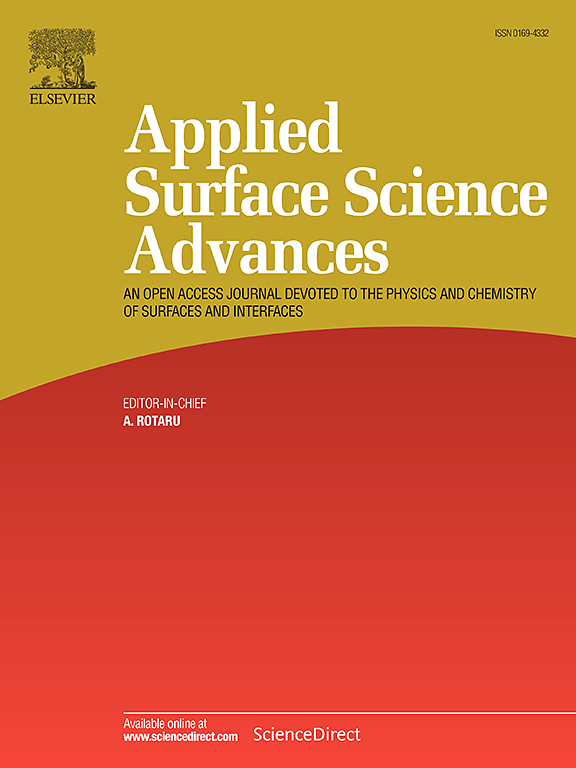Pulsed reverse electrochemical synthesis of Ag-TiO2 composites from deep eutectic solvents: Photocatalytic and antibacterial behaviour
IF 7.5
Q1 CHEMISTRY, PHYSICAL
引用次数: 0
Abstract
This study presents an environmentally friendly approach for synthesis Ag-TiO2 composite using pulsed reverse current (PRC) electrodeposition from green electrolytes, specifically deep eutectic solvents (DESs). The combination of PRC and DESs offers better control over nanoparticle synthesis while eliminating the need for toxic or expensive precursors, representing a significant advancement in sustainable nanomaterial synthesis. Different electrochemical parameters were adjusted, and their influence on the structure and morphology of the composite was investigated using X-ray diffraction (XRD), X-ray photoelectron spectroscopy (XPS), scanning electron microscopy (SEM) and transmission electron microscopy (TEM). TEM analysis revealed that silver nanoparticles (Ag NPs) are attached to TiO2 nanopowder, with the coexistence of TiO2 and Ag further confirmed by XRD and XPS. The recorded UV–Vis diffuse reflectance spectra (DRS) displayed a broad peak in the range of 400 – 650 nm, associated with the localized surface plasmon resonance (LSPR) of Ag NPs on the semiconductor’s surface. The photocatalytic activity of TiO2 nanopowder and Ag-TiO2 composite was evaluated based on the degradation of methyl orange (MO) dye under UV and visible light illumination. Our findings clearly demonstrated that the incorporation of Ag improved the photocatalytic efficiency. The mechanism of MO dye degradation was explored by using various scavengers, revealing that superoxide radicals (•) play a dominant role. Furthermore, the incorporation of Ag NPs significantly enhanced the antimicrobial activity of the oxide against both Gram-positive (B. subtilis) and Gram-negative (E.coli) strains.
深共晶溶剂脉冲反电化学合成Ag-TiO2复合材料:光催化和抗菌行为
本研究提出了一种环境友好的方法,利用脉冲逆流电沉积(PRC)从绿色电解质,特别是深共晶溶剂(DESs)中合成Ag-TiO2复合材料。PRC和DESs的结合提供了更好的纳米颗粒合成控制,同时消除了对有毒或昂贵的前体的需要,代表了可持续纳米材料合成的重大进步。通过x射线衍射(XRD)、x射线光电子能谱(XPS)、扫描电子显微镜(SEM)和透射电子显微镜(TEM)研究了不同电化学参数对复合材料结构和形貌的影响。TEM分析表明,银纳米粒子(Ag NPs)附着在TiO2纳米粉末上,XRD和XPS进一步证实了TiO2和Ag的共存。记录的紫外-可见漫反射光谱(DRS)在400 ~ 650 nm范围内显示出宽峰,与银纳米粒子在半导体表面的局部表面等离子体共振(LSPR)有关。通过紫外和可见光照射下对甲基橙(MO)染料的降解,考察了TiO2纳米粉体和Ag-TiO2复合材料的光催化活性。我们的研究结果清楚地表明,银的掺入提高了光催化效率。通过多种清除剂对MO染料的降解机理进行了探讨,发现超氧自由基(•O2−)起主导作用。此外,Ag NPs的掺入显著增强了氧化物对革兰氏阳性(枯草芽孢杆菌)和革兰氏阴性(大肠杆菌)菌株的抗菌活性。
本文章由计算机程序翻译,如有差异,请以英文原文为准。
求助全文
约1分钟内获得全文
求助全文

 求助内容:
求助内容: 应助结果提醒方式:
应助结果提醒方式:


